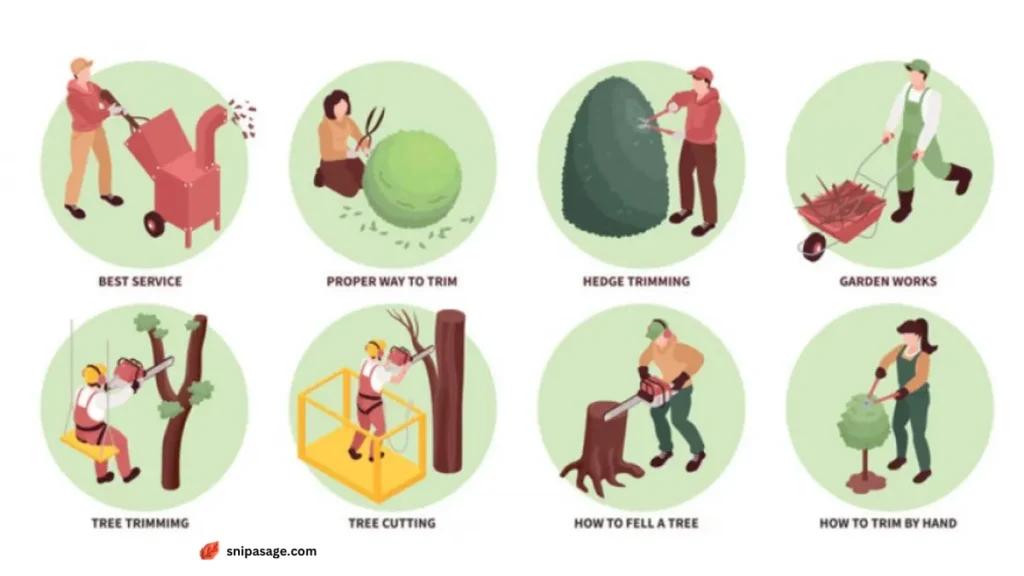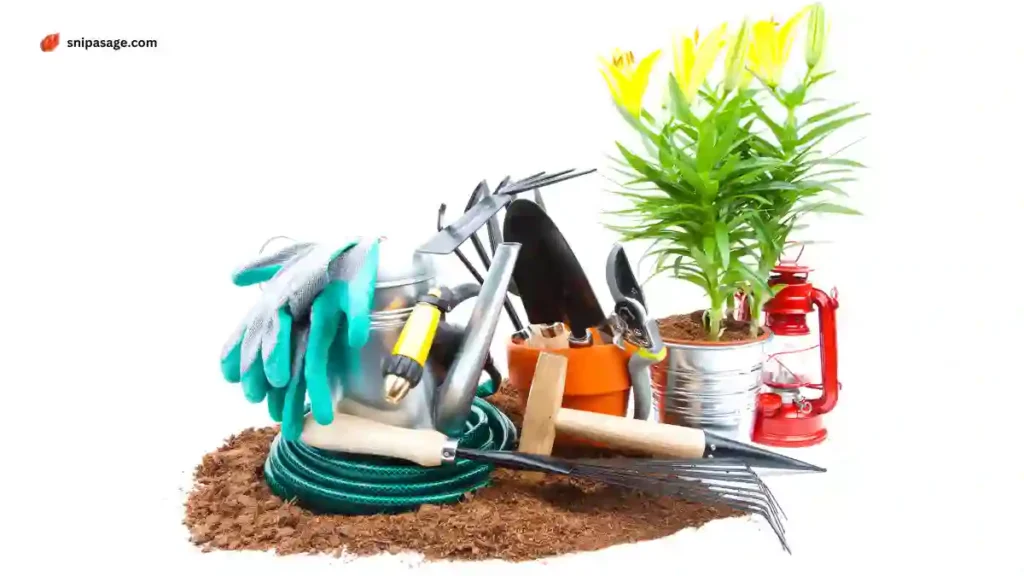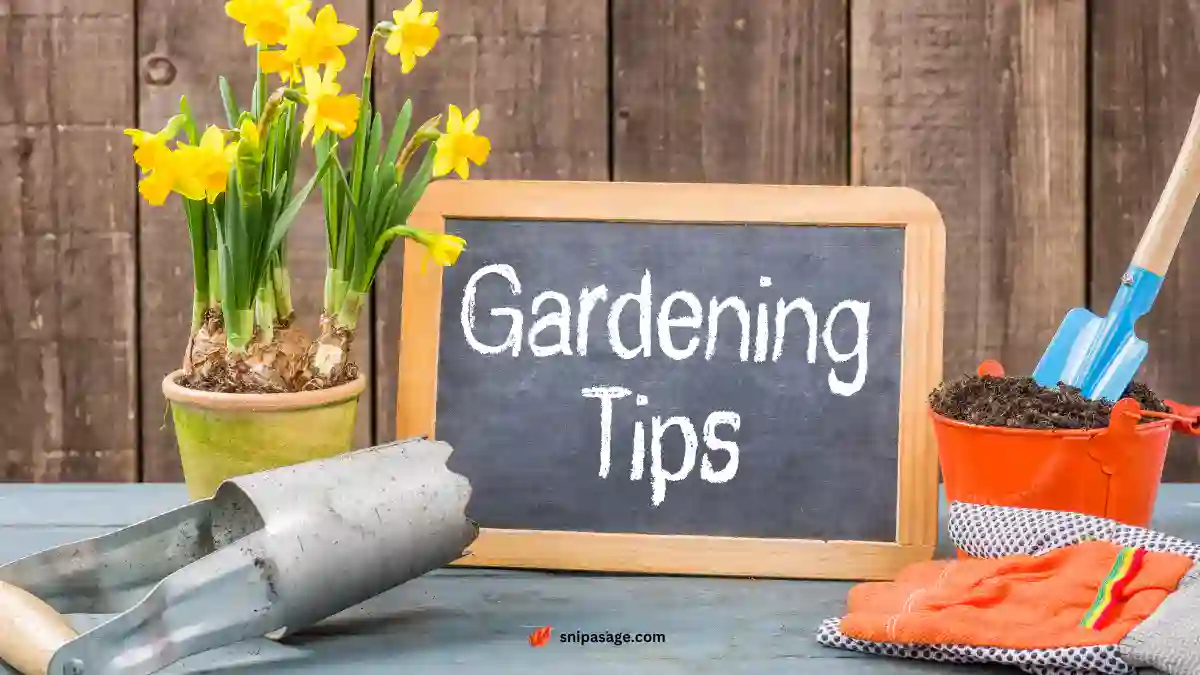Gardening has many advantages, starting from increasing the curb appeal of your home to fostering a sustainable environment. Why do you need to protect it? The best gardening tips and tricks for establishing and maintaining a flourishing garden include creating a sustainable garden oasis, which will be discussed in this extensive guide. This guideline aims to provide essential gardening suggestions for setting up and managing an attractive garden oasis that will offer you results regardless of whether you have an expansive suburban backyard or even a small city balcony.
Importance and Benefits of Gardening
Gardening is much more than a pastime; it’s a nurturing practice that yields physical, mental, and environmental rewards. Studies demonstrate that spending time in green places, whether in vast parks or your home garden, may decrease stress and improve general well-being. Home gardening can also make you feel powerful over the quality of your products hence cutting down on your carbon footprint.
The Therapeutic Nature Of Green Spaces
Green areas can have an incredible power to lift our spirits and make us feel less tense. Cultivating seeds into flowering plants or growing fresh vegetables is unbelievably satisfying in that it gives a sense of aim as well as achievement.
Eco-Friendly Habits
When you compost and save water, it makes the ecosystem healthy. If you grow them naturally, you are not only growing them but also fostering an environment that promotes biodiversity and functions with nature.
Step 1: Choosing the Right Plants
Proper plant selection is necessary for successful gardening. A plant that suits your climatic condition, soil type, and space availability is more likely to do well when compared to one that does not.
Assessing Your Site
Before dashing off to the nursery, take a look at what your garden has got. Is your area filled with sunshine or shaded? How acidic or alkaline is the soil in question? Considering these factors will help you select plants that best suit your garden’s unique environment.

Tailoring Plant Selection to Your Environment
Whereas some plants grow well in some places, others can be grown in any environment. Native plants tend to require less maintenance as they have adapted to your area over time. Moreover, when landscaping with plants that suit the scale of your garden, you will have a more pleasing landscape and one that is easier to manage.
Considering Maintenance Levels
All gardens require regular maintenance, but some plants are more demanding than others. Think about how much time you can spare and if you are willing to commit yourself. People with limited schedules should choose low-maintenance varieties that still produce an attractive and productive garden.
Step 2: Preparing the Soil
A healthy garden starts with soil health. Properly preparing the soil ensures that your plants obtain the nutrients they need for growth, vigor, and bloom.
Soil Testing And Amendments
In order to comprehend your soil’s present composition, carry out a soil test. This, in turn, will help you to make the necessary changes and amendments to balance the nutrients correctly and adjust your pH level.
Drainage And Aeration
One common problem that often arises in gardens is poor drainage, leading to root rot and a range of plant diseases. Raised beds or adding organic matter to your soil can improve drainage as well as promote aeration.
The Role Of Mulch
Mulch is of great benefit in gardening since it helps control weeds, conserve moisture, and regulate temperature in the soil. Also, use organic mulches such as wood chips or straw that eventually decay, thereby improving your soil further.
Step 3: Watering and Irrigation
Different methods could be more effective in watering plants according to the type of plant and location.
Understanding Your Plants’ Thirst
There are plants that need more water than others. For instance, succulents like to be dry, while most vegetables and flower beds require frequent wetness. Understanding your plants’ specific requirements for watering can help you avoid either too much or too little water.
Efficient Irrigation Methods
Water is dripped directly at the base of a plant using the drip irrigation system or soaker hose which ensures that there is less wastage of water and reduced chances of diseases related to water. These techniques ease watering, thus saving time.
Water Conservation
Water preservation is crucial, especially in arid regions where less water is available. This water can be minimally spent, and the garden may remain sustainable by well adopting techniques like rainwater harvesting and mulching.
Step 4: Planting and Transplanting
The outcome of your garden is heavily influenced by the way and timing of its planting.
Sowing Seeds
When planting seeds, follow recommendations for depth and spacing for each variety. Carefully observe soil temperature, as some seeds need warmth to germinate.

Transplanting Young Plants
Handle the seedlings gently during their transfer to the garden so that they suffer from minimum transplant shock. To harden off your plants, you might want to expose them gradually outside before planting them on the ground.
Timing Considerations
There are some types of plants that can only be sown or transplanted within specified times. Just have a look at a planting calendar in your area and ensure that you plant just in time to get more harvest.
Step 5: Fertilizing and Nutrient Management
Plants need a balanced supply of nutrients; sometimes, though, they require soil enrichment.
The Fertilizer Equation
Learn the three major nutrients, namely N (nitrogen), P (phosphorus), and K (potassium), and their function in plant development. Fertilizers containing these elements can be adjusted to address specific deficiencies.
Organic Amendments
Composts, mulches as well as other organic materials make excellent sources of plant nutrition. Apart from that, these also improve the quality of soil and help to maintain an ecosystem with beneficial microbes in it.
Monitoring For Nutrient Deficiencies
It is crucial to know how nutrient deficiency appears, such as yellow leaves or dwarfed growth. Regular soil testing will inform you when it’s time for fertilizers or amendments, too.
Step 6: Weed and Pest Control
Common garden foes include weeds and bugs, but there are efficient methods to control them without using toxic pesticides.
Weed Prevention
By implementing proper mulching, consistent weeding, and strategic use of landscape fabric, you can effectively prevent weeds from overtaking your garden. The secret to weed control is dealing with them early and often, if possible.
Natural Pest Management
One way to do this is by attracting beneficial insects as well as birds into your garden by having different species around along with supplying water sources. This way, natural pest control will take place in most cases on its own.
Identifying And Treating Pests
Keep a sharp eye out for symptoms of pests or illnesses on your plants. There are many eco-friendly treatments available considering early recognition helps prevent disease spread through massive infestations.
Step 7: Pruning and Maintenance
Pruning improves plant structure, keeping them healthy while shaping their future productivity; hence it is a very vital maintenance practice. Always use proper equipment and techniques if the best results are your goal.
Pruning Basics
You should comprehend when, why, and how to prune different plants correctly. An incorrect pruning job may lead to weak growth or even damage the plant itself.
Staying On Top Of Maintenance
Regularly inspect your garden for signs of plant diseases or pests. Remove dead leaves, flowers, and branches immediately and check for any necessary repairs or replacements.

Tool Care
It’s easier to do gardening tasks using well-maintained tools. Thus, keep your tools clean, sharp, and rust-free to ensure that they serve you for many seasons in the future.
Understanding Pruning
Different plants require diverse pruning methods. Find out why you are pruning – either removing dead or diseased branches, controlling a plant’s size, or encouraging it to become bushier.
Timing Is Everything
After spring, blooming shrubs, for instance, should be pruned once they have flowered. Pruning is done at the right time by understanding the natural cycles of your plants.
Regular Maintenance
Remembering tasks like deadheading flowers, dividing perennials, and removing spent foliage will help you maintain your garden well. Through regular maintenance, one minimizes chances of pests and diseases besides helping retain its beauty.
Step 8: Harvesting and Storage
The most intriguing aspect of gardening is harvesting, yet doing so effectively might allow you to reap more benefits from your efforts.
Knowing When To Harvest
Every crop has indicators that tell when the best time for harvesting is. From tomatoes with tight skin to cantaloupe rinds changing color, know what signals show whether your fruits and vegetables are ready to pick up.
Proper Storage
Some vegetables, such as root crops & winter squash, will last several months if stored in a cool, dark place. Others, including leafy greens & herbs, are better used fresh or preserved through freezing or canning.
Seed Saving
Next year, you will have planted your gardens using the seeds collected from those plants that you consider to be most favorite among them. You just have to observe a number of things while drying and storing in order to obtain a good rate of germination.
Proper Harvesting Technique
Be careful not to spoil vegetables by handling them gently and using clean tools when working on them. Instead of simply breaking the stems, you can cut them off, thereby increasing the life of your crops as well as making it easier for harvesting in the future.
Storage And Preservation
The right storage practices for your harvest could make it last longer. Many fruits and vegetables do best under cool, dry, and dark conditions. Look at preservation options like freezing or canning in which you can utilize all of your garden’s abundance throughout the year.
Conclusion
Gardening is very rewarding indeed. With this essential gardening advice at hand, you are ready for your journey through – or back into – gardening. Being aware that any garden is a live system demands flexibility rather than adherence to rules only, as well as learning from experience.

